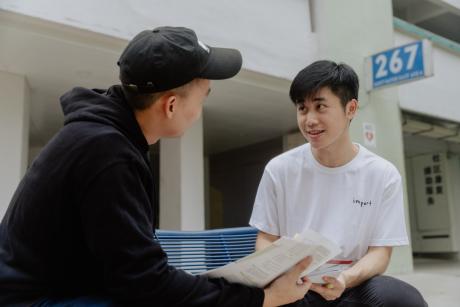By Haneol Jeong
The 21st century has seen cars go driverless and virtual reality become a reality—yet one fact remains: one in seven people still do not have access to electricity.
In an age where more people have access to mobile phones than toilets, electricity has become as vital a necessity as clean water. To address this issue, social enterprises such as M-KOPA and Sunlabob have pioneered efforts to provide renewable energy for off-grid communities, and yielded innovative energy alternatives and financing solutions.
Southeast Asia, however, remains a largely untapped market, with approximately 19 per cent of its population still without access to consistent electricity. For the social enterprises focusing on energy access, securing early-stage financing to cover the initial costs of product development, manufacturing and delivery determines the future of the company. However, the current financial marketplace in Southeast Asia lacks patient, early-stage capital to support such social enterprises.In order to translate the projects into self-sustaining, profitable companies, it is crucial that public and private sectors collaborate to create an ecosystem with a low barrier to entry and financial support for social entrepreneurs with innovative ideas for energy access.
Support from the public sector can come in the form of early-stage development capital, low-cost debt, or subsidised off-take agreements. Governments can directly provide development capital for the social enterprises by forming a collaborative venture capital with a private partner, but this can often be impossible for developing countries with restricted finances. In such cases, the government can use its legal framework to provide social enterprises with easier access to private, low-cost capital. Developed countries with active impact investments, such as the UK or US, have specific business categories in place for social enterprises to provide protection and allow easier access to capital than for non-profit organisations, while requiring of them transparency in their processes and delivery of their social mission.
These categories—known as Community Interest Company (CIC) in the UK, and Low-Profit Limited Liability Company (L3C) in the US—allow social enterprises to register inexpensively and enjoy the flexibility of a traditional LLC to a certain extent, as well as the benefits of non-profits. Additionally, subsidised off-take agreements will ensure that the social enterprises are profitable in the short term and stay self-sufficient in the long term.
While the government will have to work with limited resources and potentially lower revenues, attracting more private capital to provide initial funding for social enterprises at a low cost and creating an environment that can ensure their survival will have lasting impacts on a country’s economy. The funding, however, is only successful when supply can meet the market demand, the latter of which is limited due to the low-income nature of a population without energy access.
The target market for energy access is often not able to afford hi-tech renewable energy solutions. Traditionally, non-profit organisations and charities have aimed to mitigate this problem by supplying the technology free of charge. Although feasible in theory, supplying free energy has led to certain problems, most notably the decrease in quality of the electricity. As such, off-grid communities no longer want free, inconsistent electricity from cheap equipment; they instead demand a safe, consistent supply of electricity with proper maintenance and updates, even if at a cost. Therefore, the challenge for social enterprises is ensuring that the high-quality equipment is affordable to even the most financially isolated communities.
Certain social enterprises, including M-KOPA, have overcome this challenge through innovative asset financing structures. M-KOPA, a social enterprise based in Kenya that provides portable solar panels to off-grid households, successfully adapted asset financing to their business model. It requires its customers to pay an upfront deposit and then the remaining cost of equipment over a year at a flexible schedule. Once the deposit is paid, customers top up their account through a mobile transaction service, M-PESA, and enjoy a consistent supply of electricity at US$0.49 per 24 hours. Each device is remotely controlled by the centralised computer system, and automatically shuts off if the account is empty.
This type of asset financing differs from conventional microfinancing in that it does not enforce a strict payment schedule or amount. This flexibility ensures that the widest socio-economic range of target markets is reached, while the company still remains profitable. Although M-KOPA’s system works because of its centralised, remote-controlling computer system and the existence of the mobile transaction company M-PESA, its asset financing structure is one that can be adapted to the context of Southeast Asia. Instead of controlling each device remotely, social enterprises providing a similar energy solution can set up regional service centres with sales and customer service representatives integrated in each community to monitor repayments and provide regular maintenance service.
This method has proved to be successful by Sunlabob, an off-grid renewable energy provider in Laos. When launching its operations, Sunlabob invited 70 people from various ethnic groups to receive technical and business operations training. The trainees then returned to their respective off-grid communities with rented equipment from Sunlabob to establish micro-enterprises to manage maintenance and payment collection. Although Sunlabob later expanded to large-scale projects with government off-take agreements for financial reasons, the initial approach tailored to the market was effective in reaching the target customers.
In conclusion, securing early-stage funding for energy-focused social enterprises is not possible without proper support from the public sector. Whether in the form of venture capital through a public– private partnership or a change in regulations, the public sector must fill the gaps in order to translate projects into sustainable businesses that are scalable in the long run. Additionally, in order to ensure that the low-income target market can afford the high-quality products and services, social enterprises could implement innovative financing instruments, such as asset financing tailored to the regional and cultural characteristics.
Such a financing structure, accompanied by a proper support system and new technologies that can bolster economic activities, will allow the financially isolated off-grid communities to become a self-sustaining and expanding participant of the global economy.
Originally from Seoul, South Korea, Haneol Jeong is a student at the Wharton School of the University of Pennsylvania, and a member of the Joseph Wharton scholars programme. He was a Summer Research Associate at the Lien Centre for Social Innovation, where he conducted an independent research project on increasing energy access in Southeast Asia through investment in social enterprises. He has previously worked as a renewable energy project research assistant in Bangkok, and as a private equity summer analyst in Seoul. Haneol’s primary research interests include renewable energy, impact investing and development banking. He can be reached at haneolj@wharton.upenn.edu








Comments